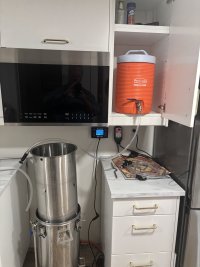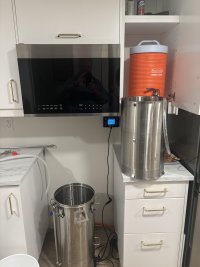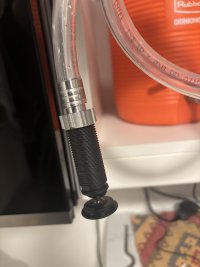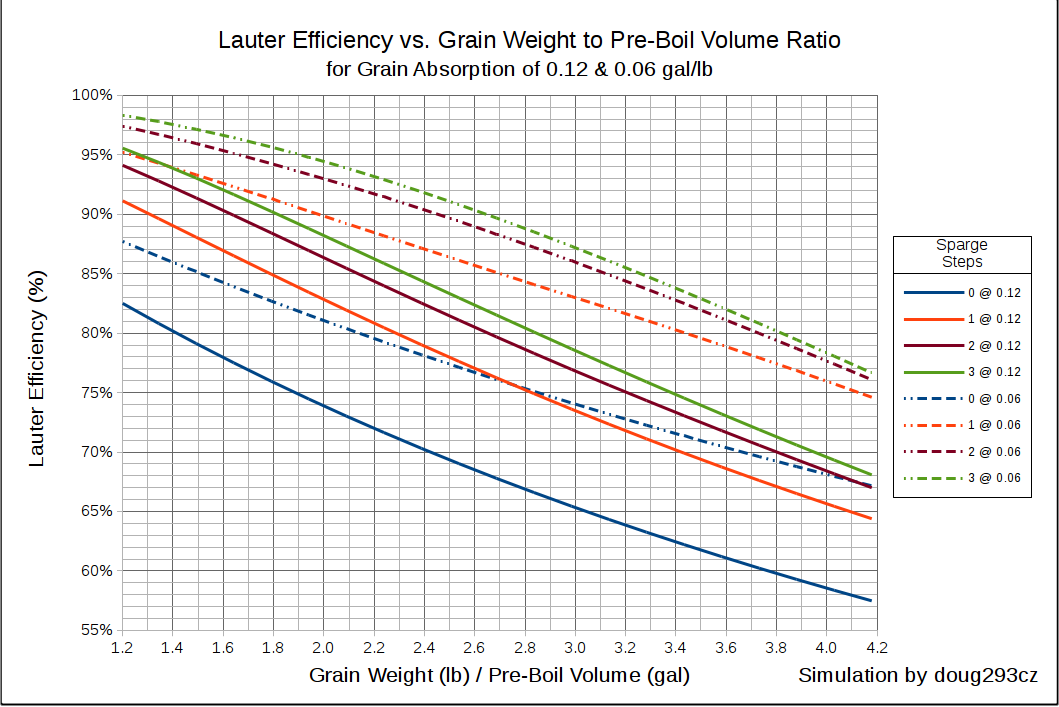- Joined
- May 6, 2025
- Messages
- 303
- Reaction score
- 238
It's probably because I'm new, just returning to the hobby, so BIAB, batch sparging, that's all new to me.
But is BIAB any different from three vessel? I ask this question just because I sometimes don't know which forum to use.
I used three vessel back in the day. Now I have a Brewzilla. But it's still three vessels. The photos below show the kettle, the metal mash tun over to the side, and above the mash tun we have the orange insulated holder of hot sparge water.
But if the mash tun sits directly over the boiler, then we call it BIAB even though it's the same system.
I don't think the difference is in the sparge either, as you can batch or fly with either system. In my Brewzilla I do a slow gentle spraying of 170F sparge water, without disturbing the compact mash bed. That's fly, I believe. Or at least its' not batch.
It's seem to me that the more significant difference is vorlauf. By placing the mash tun directly over the boiler, it's easier to have a recirculating pump going for the entire mash. And I like continuous vorlauf.
For me, the label seems to be just All Grain, but with various techniques. Vorlauf or not? Batch or fly? Fast chill or not? etc.
Photos below.
But is BIAB any different from three vessel? I ask this question just because I sometimes don't know which forum to use.
I used three vessel back in the day. Now I have a Brewzilla. But it's still three vessels. The photos below show the kettle, the metal mash tun over to the side, and above the mash tun we have the orange insulated holder of hot sparge water.
But if the mash tun sits directly over the boiler, then we call it BIAB even though it's the same system.
I don't think the difference is in the sparge either, as you can batch or fly with either system. In my Brewzilla I do a slow gentle spraying of 170F sparge water, without disturbing the compact mash bed. That's fly, I believe. Or at least its' not batch.
It's seem to me that the more significant difference is vorlauf. By placing the mash tun directly over the boiler, it's easier to have a recirculating pump going for the entire mash. And I like continuous vorlauf.
For me, the label seems to be just All Grain, but with various techniques. Vorlauf or not? Batch or fly? Fast chill or not? etc.
Photos below.







